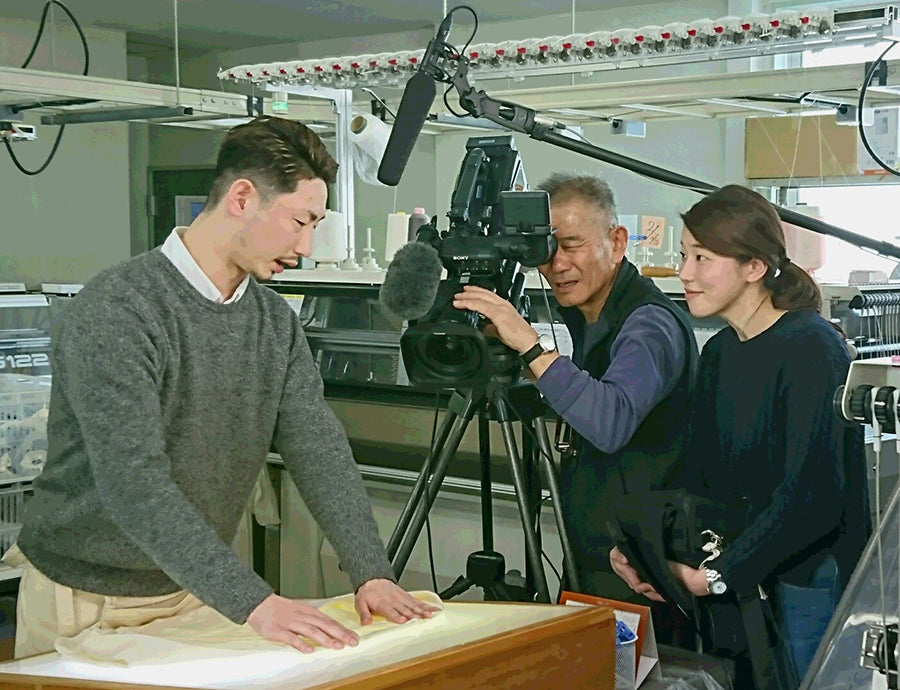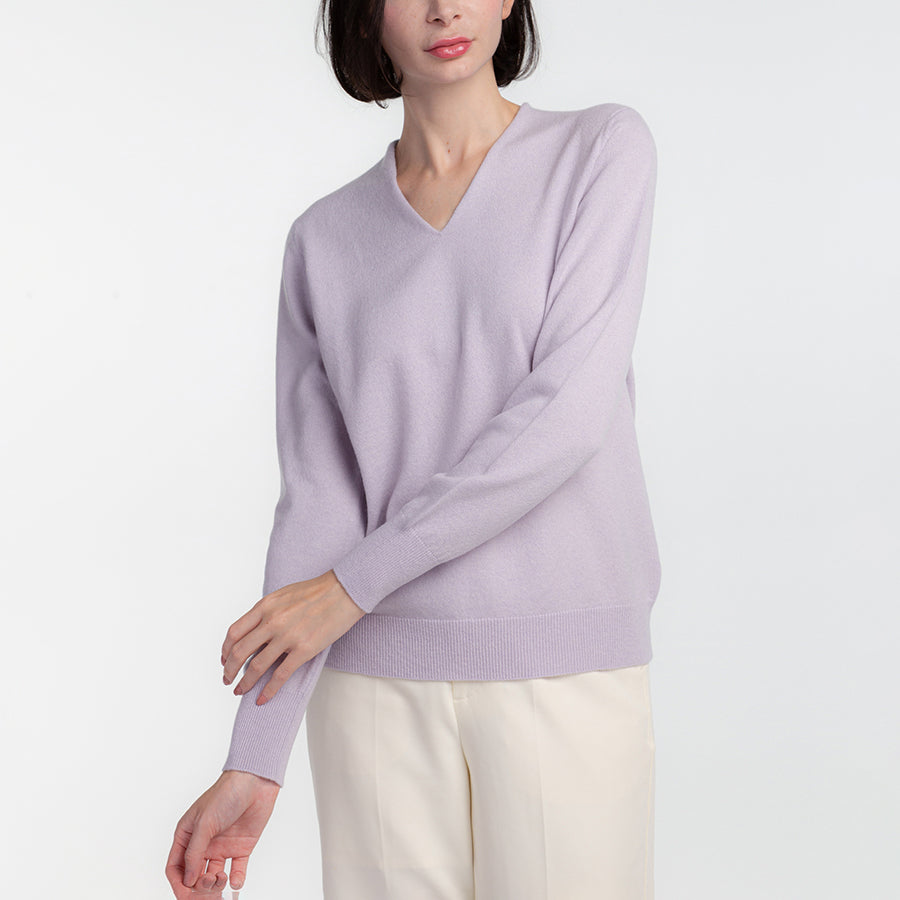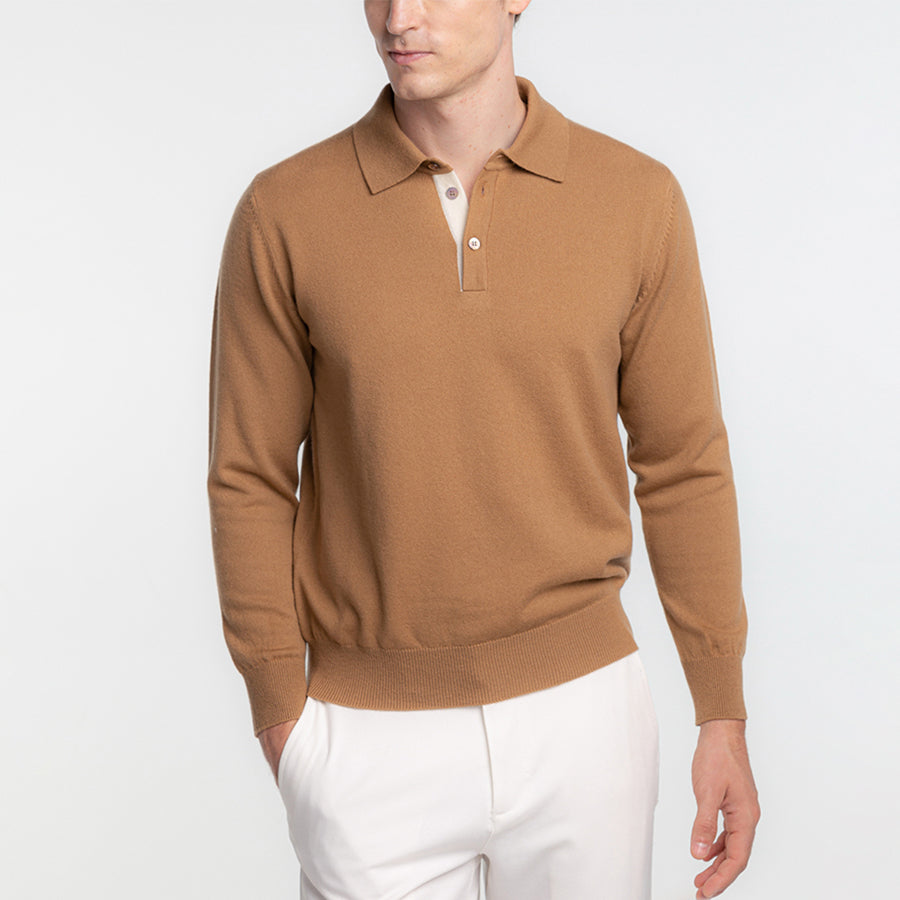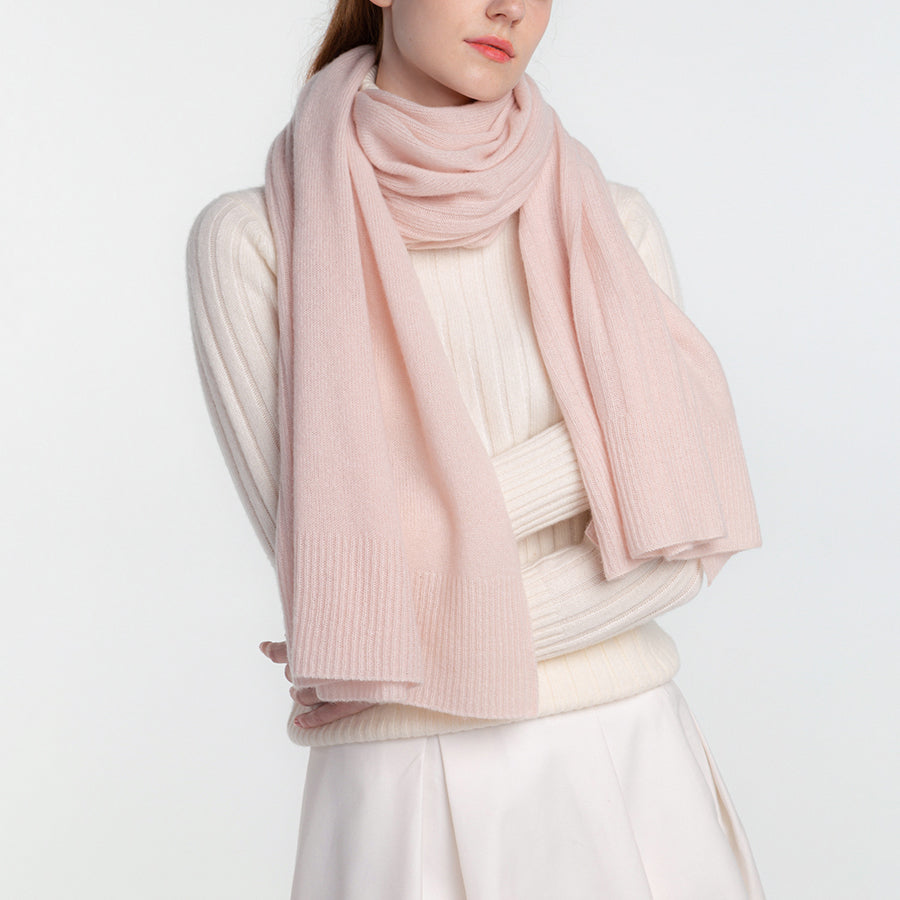History
- The History of CEO Uto Toshikazu -
1970s "Travel agent era"
Working as a travel agent, he created and led research tours of London, Paris, Milan, and other cities for people in the knitwear industry. Completely ignorant of fashion, he was greatly helped by Ms. Junko Shimada, a designer based in Paris. In time, these tours led him to make an unexpected career change, joining the knitwear manufacturer “les halles” to become a knitwear maker.
1980s "Knit maker era"
In England, at the head office of John Smedley, he encountered cashmere that was sold in-house, and was fascinated by its light, soft texture. By visiting factories in Japan, Hong Kong, Taiwan, South Korea, and Europe, he saw many modes of production. He also visited factories in England and Italy for production requests, where he was exposed to differences both in production methods and other ways of thinking between East and West.

- UTO's History -
From 1992 "bhf era"
1992
He established the knit brand "bhf International" in Minami-Aoyama, Minato-ku, Tokyo with a desire to provide the kind of high quality knitwear fundamental to high fashion. bhf stands for “base of high fashion.”
1994
A new knit brand "House of White Cashmere" was also launched, creating a two-brand system. “Cashmere” was something everyone knew about, a soft, light, warm, material people longed for. "From now on, it's an era of specialists. If you can make everything, that really means that you can’t make anything." Based on this idea, the brand is committed to a focus on cashmere. By sticking to one material, his aim was to become a specialist, as well as the number one cashmere manufacturer both in Japan and worldwide.

〈Future vision of the company〉he made at this time
"Creating the best cashmere knitwear in Japan and the world"
"Integrated production at our own factory, making things that satisfy"
"Production factory, atelier, and headquarters in a dreamy building like the one above"
“Distributing new fashion from a beautiful village in Shinshu, rich in flowers and greenery”
“Guest rooms and promenades where customers and shareholders come to visit and stay (I want to invite everyone to stay overnight and hold exhibitions)”
“The market is global – our sales are both domestic and international”
“Many Shareholders – Recruiting shareholders widely. They’re our best supporters”
“Dividends are held overseas every year for a launch party and shared playfulness”
From 2000 “UTO era”
1996
Mass produced knitwear was common. After going independent, he struggled with the large quantity of lots and inventory, and withdrew from Aoyama. While considering withdrawal from the knit maker, he continued work on knitting contracts at home.
2000
"If I'm planning to withdraw anyway, I'd like to try again with just my favorite cashmere. And if it doesn't work out, I'll give up." With this thought in mind, he changed to a brand specializing exclusively in cashmere knitwear.
2001
With the cooperation of Uchida Knit, a manual flatbed knitting machine, he began offering “made-to-order and custom-made (adjustment of size and sleeve length) knitwear”, which was unprecedented in the industry, and held cashmere order events at boutiques nationwide. His starting point was his experience working with knit factories in Europe and Asia.
From 2005 "Yamanashi factory era"
2005
Introduced the Shima Seiki SES, a knitting machine, and opened a factory in Yamanashi. A meeting with the factory manager and a strong desire to "manufacture satisfactory products" became his impetus for opening his own factory for the first time.
2006
He published "The Story of Cashmere and Knitwear" with Senken Shimbun. With the book’s publication, the number of OEM offers from department stores and famous brands overseas rose. In addition, he started online sales as a BtoC initiative.

Book "The Story of Cashmere and Knitwear"
(Published by Senken Shimbun)
2007
He took part in a collaboration with Mitsukoshi Nihonbashi Main Store to "provide the world's best sweaters that can be traced from raw materials to manufacturing." He visited cashmere pastoralists in China’s Inner Mongolia Autonomous Region, Alxa which produces the world's finest raw cashmere. Using 100% raw cashmere from the region, he provided products manufactured to customer order at the UTO factory.

2007
He visited Alxa, a cashmere production area. Mr. Du, a cashmere farmer, guided him through the cashmere wool harvest, explaining about coexistence and life with local goats. "Humans do not abuse cashmere". With his own eyes, he witnessed the good relationship between humans and goats.

Experience cashmere wool harvesting
2009
The showroom in Minami-Aoyama, Tokyo was used as a shop, and had its own store for the first time. His wish was to “create a store where customers can actually touch the cashmere and experience its unique texture, spending time shopping while talking with the creators.”
From 2011 "Iwate factory (Tatekawame, Kitakami City) era"
2011
The Yamanashi factory was closed due to lack of linking craftsmen. It was relocated to Tatekawame, Kitakami City, Iwate Prefecture.

Linking is a process unique to knitting
2012
At the time of the relocation, six months after the Great East Japan Earthquake, the Tohoku region was still in a state of turmoil. He wondered if there was anything his company could do for the city, and began the brand “UTO kitakami.” Hoping to help with the cost of kerosene for people to get through the cold Tohoku winter, he began to donate 100 yen to Kitakami City Hall for every UTO kitakami product sold. At the same time, we made and sold "Tenshi no Shiori (Angel bookmark)," and donated 100 yen for each one sold.

"Tenshi no Shiori (Angel bookmark)" made from cashmere.
Click here for the Tenshi no Shiori (Angel bookmark) project>>
From 2014 "Iwate factory (Ezuriko, Kitakami City) era"
2014
He relocated the factory to Ezuriko, Kitakami City. In addition, "hometown tax donation program" began. Since 2014, about 200 million yen has been donated every year through this program.

2016
In November, "Unique Branding for Small and Medium-sized Manufacturers” and "Go for it! Big Furoshiki Travel Shop” were published at the same time from Gentosha Literary Publication

President Uto appeared as a commentator in a segment on cashmere on TV "Nonstop" (Fuji TV). After that, it was introduced in a segment on the hometown tax donation program, on "Shinichi Hatori’s Morning Show" (TV Asahi), "Chokugeki Live Goody" (Fuji TV), and "Gogosuma" (TBS).

2017
He started "fitting at home," a service allowing customers to try on clothes at home. The "free rental of up to 3 items" was a unique service in the industry. In addition, the first overseas expansion began. He started selling at the shop of NPO "J+B Design" in Brooklyn, New York. He also began selling items through a men's boutique in the luxury boutique district of Brera in Milan, Italy.
2018
He received a "Value Prize" from the Corporate Value Organization, which is supported by the The Small and Medium Enterprise Agency. The collaboration between Tokyo and Iwate through integrated planning, manufacture, and sales of cashmere, and the contribution of the hometown tax donation program to Kitakami City, Iwate Prefecture, received a high evaluation.

Introduced on the TV program "Bi no Tsubo" (NHK), during a segment on sweaters.

2020
President Uto appeared in the TV program "Gacchiri Monday" (TBS)’s "Moukaru! Hatake-chigai shacho" segment.
2021
“Amount donated to victims of the Great East Japan Earthquake: Cumulative total of 3 million yen or more for 10 years” and “Hometown tax donation amount: Cumulative total of 1.5 billion yen or more for 8 years”.

Handing over the donation to the mayor of Kitakami City
2022
UTO's "Cashmere Tenshi no Shiori (Angel bookmark)" received the "Social Products Award 2022" from Association for the Promotion of Social Products as a product leading to "recovery from the Great East Japan Earthquake".

Sold at art galleries, hotels, inns, bookstores, etc nationwide
President Uto received the Kitakami City Municipal Government’s 30 Year Development Achievement Award (Achievement in Industrial Development).

He gave a lecture at the Kitakami Citizen University’s annual local lecture assembly.

UTO appeared in "Ikiru Kakawaru Sonaeru (Live, Involve, Prepare)," a supplementary textbook for junior high schools published by the Iwate Prefectural Board of Education.






